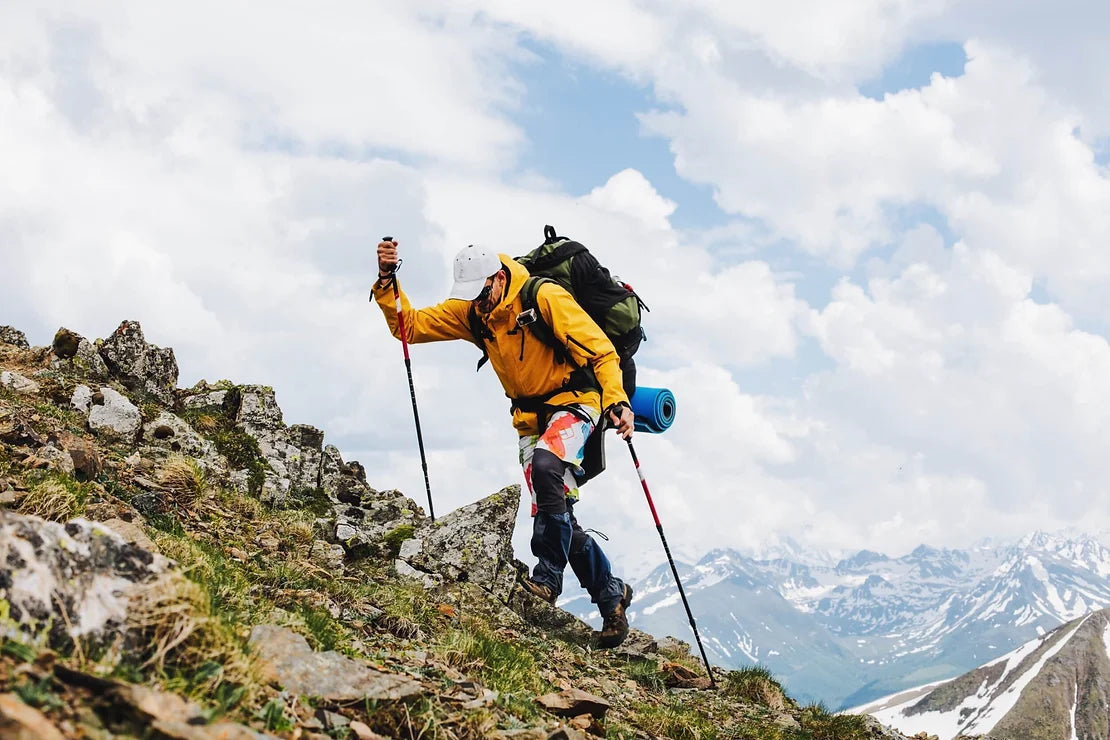Choosing the right backpack for your adventures is just as important as properly fitting shoes. You should avoid any pain from movement while walking. Pain exhausts the entire body and after X kilometers it can spread to the entire musculoskeletal system. The more pain, the less experience, because you focus more on the pain.
We may have scared you a little at the beginning and convinced you of the importance of this topic.

Choosing a backpack purely online? Nonsense!
Basic elements of a backpack
For the chest strap , also check that it can fit around your chest, that it does not loosen, and that you can move it vertically on the shoulder straps. Its function is to ensure better body contouring with the shoulder straps . These are of course the main part of the backpack and what makes the backpack more than just a fabric bag. In their case, we also focus on padding, the stiffness of the buckles and any gadgets such as various loops or pockets.
Of course, the material is VERY IMPORTANT , not everyone likes mesh, many people sweat, and cotton and woolen clothes get pilled under them. However, their advantage is good sweat removal and better ventilation.

Small, medium, huge, running, avalanche, cycling, climbing, skydiving, boating, photography, school, magic... So which one?
So let's at least assume that you are going on a trek and the main thing you have to deal with is the volume of your backpack. And this is where the dilemma for many of us arises.
Everyone has to answer for themselves. It will probably depend on the length and profile of the route, needs, climate, season, environment, and last but not least, money, and maybe even gender.
This is for each of us to consider. We all have different preferences, and each trip is specific and unique at every moment (also due to the weather), we have different financial possibilities when purchasing ultralight equipment and this must be taken into account.
Once you manage to solve this dilemma, you will also find the answer to the question: “How big a backpack do I need?!”
(SOLUTION): For me, the most universal size is 40-50l with straps on the bottom for possible extra tent attachment.
Main practical features
- A raincoat for a backpack - nowadays a fairly standard part of a backpack, but exceptions can still be found.
- Backpack compartment division - In larger backpacks, there is a partition in the main chamber that creates two chambers. The lower one is mainly used for the sleeping bag, so that you don't have to dig it from the bottom to the top. The entrance to the lower chamber is from the front of the backpack. Its size is usually just enough to fit the sleeping bag in there even without the cover. If you have a lighter (smaller) sleeping bag, an inflatable sleeping pad can also fit in there.
- Side straps - there should be two on each side and long enough to be able to roll up and stuff an entire classic sleeping mat (or exercise mat?!) under them.
- POCKETS POCKETS POCKETS - there are never enough of them.
- In the top hatch at least one on each side
- Pockets on the sides at the bottom
- Large laptop pocket on the back
- Elastic pocket on the front of the backpack
- The small pockets on the shoulder straps are also a great idea.
- External side pocket specifically for a water bottle - Classic side pockets have the same purpose, but if they are just sewn onto the main part of the backpack, we can certainly agree that when you pull out a bottle without removing a single strap, you feel like a tyrannosaurus Rex. For example, the Deuter Aircontact Pro 60+15 has a clever side pocket - it is not part of the main part of the backpack, but of the hip belt.
- Various rubber bands and pullers that you can use to attach, for example, poles to your backpack. When using them, be careful not to let anything “hang” on your backpack. DO NOT HANG OR LAY ANYTHING on your backpack! And there is one simple reason: the body uses a relatively large amount of energy to compensate for these small movements on your back.
- Entrance - it can help you find things at the bottom of your backpack, plus, if you have longer dinosaur arms, you might be able to pull something out here and there without taking your backpack off your back.
- Another very important element is the main entrance to the chamber. The times when there was only an entrance from the top are long gone. The entrance from the front is much more practical, when you can actually unfasten the entire front like a suitcase lid. Thanks to this, you always have access to all corners of your magical luggage chamber. The disadvantage is that you will not be able to compress your clothes enough to fit as much as possible (at least compared to the option of entering from the top).
- The most practical option is to enter from the back, because the zippers hold tighter in this part and, moreover, when you put it on the wet ground, you get the front part of the backpack wet, which then doesn't make you cold on your back.
Of course, there are many more gadgets today, from whistles to location systems to built-in solar panels and power banks.
Don't climb without money for a backpack





Leave a comment
All comments are moderated before being published.
This site is protected by hCaptcha and the hCaptcha Privacy Policy and Terms of Service apply.